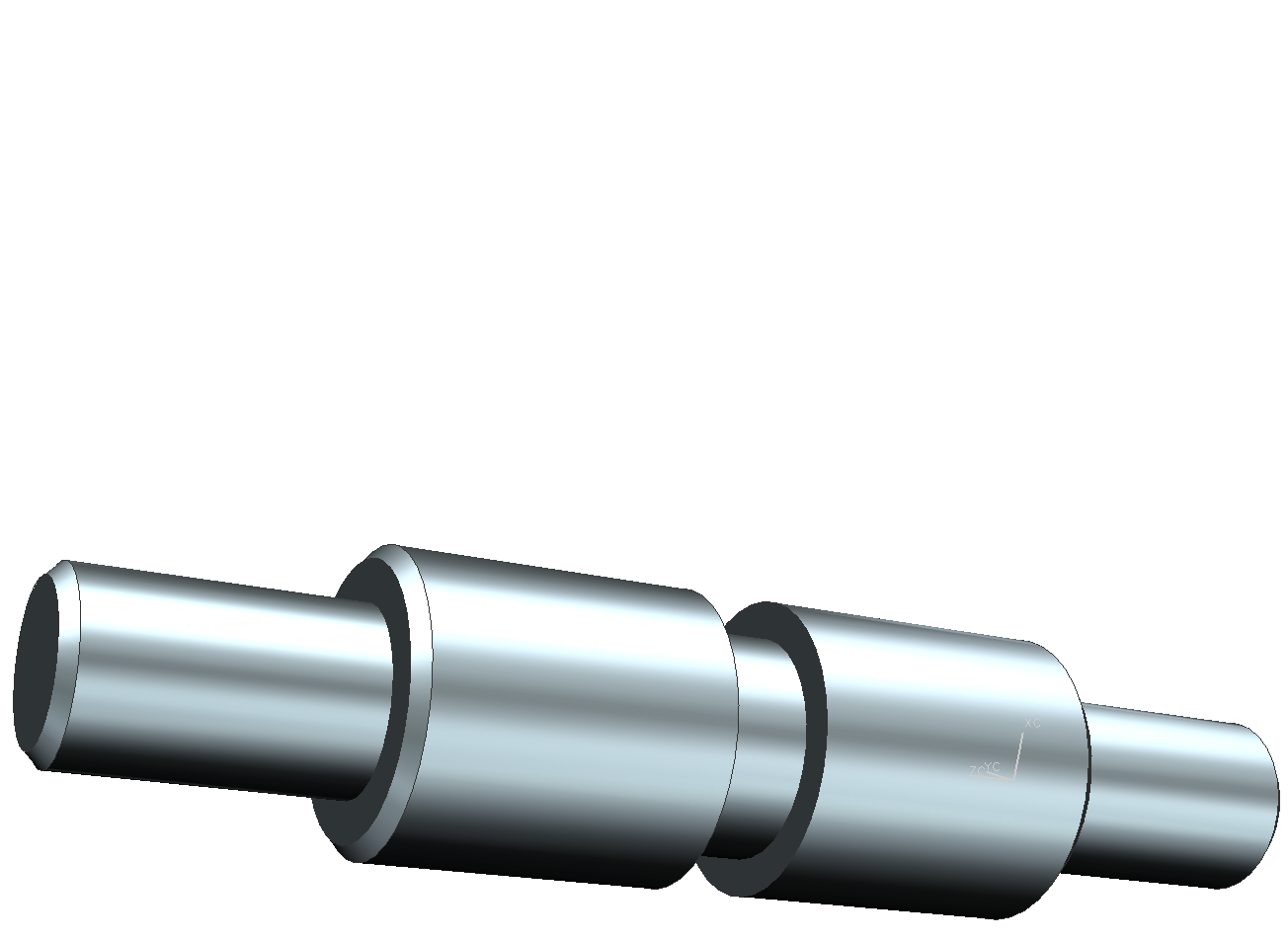To ensure easy editing of a model, the following basic rule applies:
From large to small
There are multiple reasons for this rule:
- easily understandable steps
- simplification of the model possible (e.g. for simulations)
- small features (e.g. edge blends) can be suppressed without affecting other elements
- CPU intensive elements like edge blends, chamfers or threads extend rendering time
Create a new model with the name log_modellaufbau according to the naming convention.
As base body, create a shaft with the following dimensions:
| Dimension | Value [mm] |
|---|---|
| Diameter | 50 |
| Height | 200 |
Use the function Boss ![]() to create two bosses at both ends of the shaft (you can choose their dimensions at will). (refer figure "Shaft with two bosses")
to create two bosses at both ends of the shaft (you can choose their dimensions at will). (refer figure "Shaft with two bosses")
Next, add a groove and chamfers to the edges with random dimensions.
You should now have a shaft with bosses, a groove and chamfers. (refer figure "large to small")
The goal of this exercise was to teach you the right method for modeling. It's not relevant for the result, if you created the geometry using two sketches or using this way. Anyhow, using sketches would make your modeling harder to understand for others. This is why you should always choose adequate feature operations if possible.
For further editing it can often be necessary to simplify a model. In this example the groove is of no relevance for testing the mountability of this model. Since it was added at the end, it can easily be suppressed or deleted, since no other elements are dependent on it.
So again, without trying to be repetitive:
From large to small.
